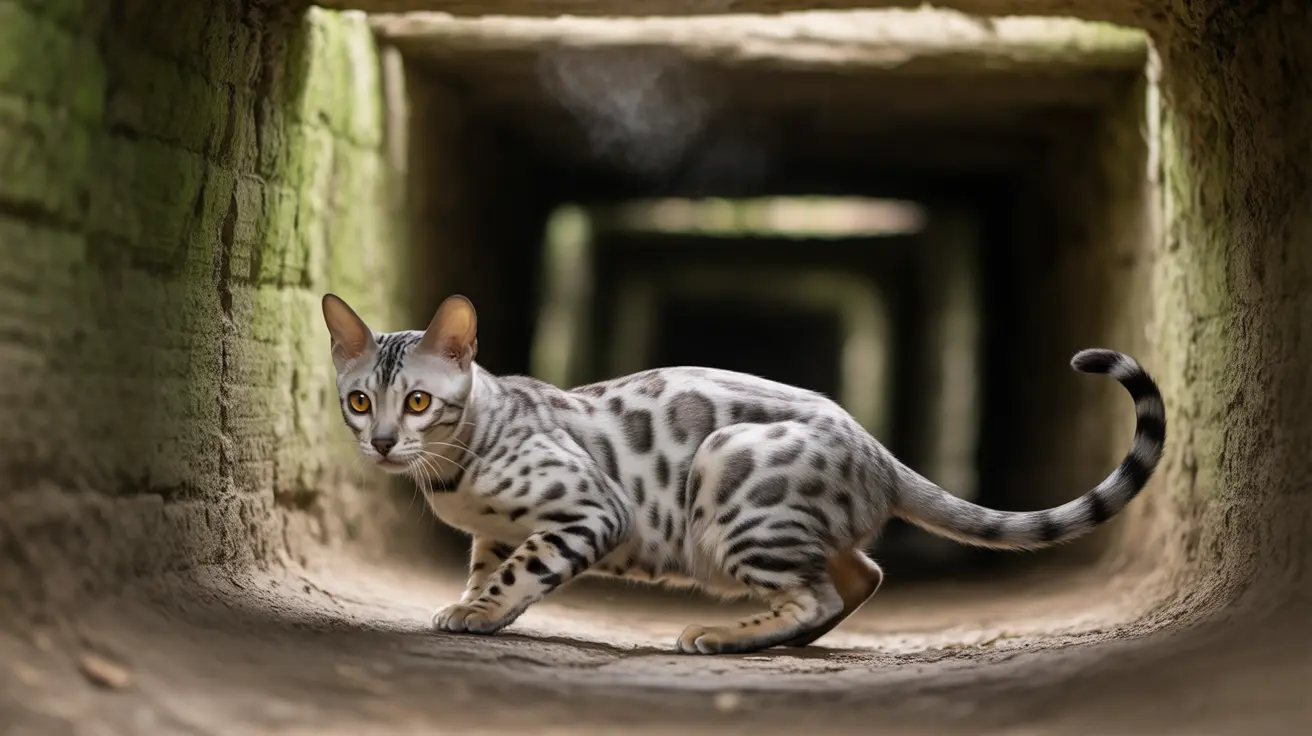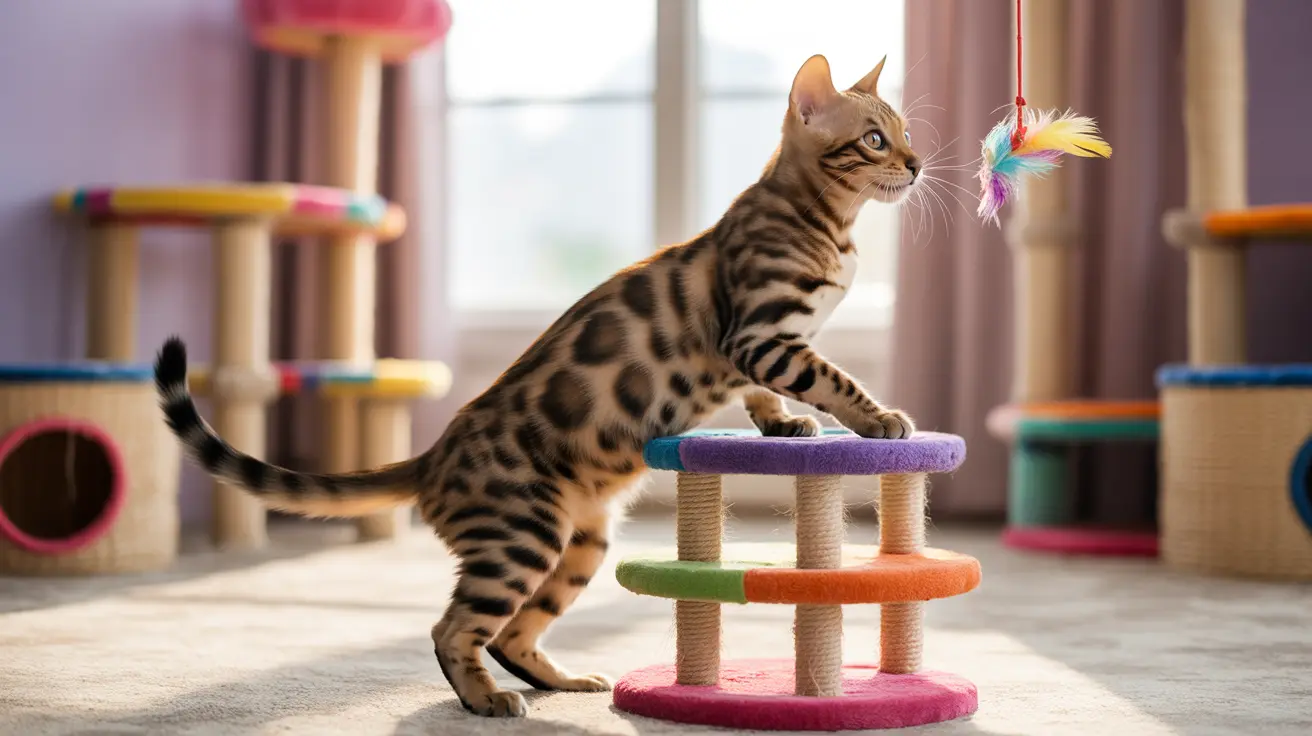How Cat Whiskers Work: The Amazing Sensory System That Guides Your Feline
Have you ever watched your cat navigate effortlessly through a dark room or squeeze through what seems like an impossibly narrow space? The secret lies in those distinctive facial hairs we call whiskers. These remarkable sensory organs are far more sophisticated than most cat owners realize, functioning as a complex tactile system that rivals our own sense of touch.
Cat whiskers, scientifically known as vibrissae, are specialized tactile hairs that serve as finely tuned sensory equipment, helping cats navigate their environment with remarkable precision. Understanding how cat whiskers work reveals the incredible evolutionary adaptations that make our feline companions such skilled hunters and agile creatures, whether they're stalking prey in the wild or simply finding their food bowl in the dark.
In this comprehensive guide, we'll explore the fascinating biology behind these sensory marvels, discover how they contribute to your cat's daily life, and learn how you can better support your feline friend's whisker health and comfort.
The Biological Structure: How Cat Whiskers Differ From Regular Hair
While cats are covered in hair, their whiskers are fundamentally different from their regular coat. Whiskers are coarser, thicker, and rooted three times deeper than normal hairs, making them incredibly sturdy and sensitive sensory instruments. Made of keratin like human hair, whiskers have a much more robust structure that allows them to detect even the subtlest environmental changes.
The most remarkable aspect of whisker biology lies beneath the surface. These specialized hairs are packed with blood vessels and nerves, making them as sensitive as human fingertips. At the base of each whisker are sensory organs called proprioceptors, which send detailed messages to the brain about the body's position and movement. Each whisker is associated with numerous nerve cells, creating a direct pathway for sensory information to reach the cat's brain for immediate processing.
This rich innervation means that while the whiskers themselves have no feeling, their follicles are incredibly sensitive. When a whisker moves or encounters resistance, the follicle detects this change and transmits the information through the nervous system, providing cats with detailed tactile feedback about their environment.
Strategic Whisker Placement: More Than Just a Pretty Face
Cats typically have 24 whiskers symmetrically arranged across their face, with 12 whiskers organized in four rows on each cheek. However, whiskers aren't limited to the familiar facial location above the upper lip. These sensory hairs are strategically located above the eyes, on the chin, on the jawline, near the ears, and even on the back of their front legs, with placement varying slightly between breeds.
Each whisker location serves a specific purpose in the cat's sensory system. The prominent cheek whiskers help gauge the width of openings and detect air currents, while the whiskers above the eyes protect against particles and help trigger blinking reflexes. The whiskers on the front legs assist with climbing and provide additional tactile feedback when cats are exploring surfaces with their paws.
This strategic distribution creates a comprehensive sensory network that gives cats detailed information about their immediate surroundings from multiple angles, contributing to their remarkable spatial awareness and agility.
Hunting and Navigation: The Whisker Advantage in Action
Understanding how cat whiskers work reveals why cats are such effective hunters, even in challenging conditions. Whiskers serve as radar sensors that can detect the size, shape, and speed of nearby objects through subtle changes in air currents. This ability is particularly valuable when hunting, as whiskers can sense the movements of prey through the air vortices created by small animals as they move.
The hunting advantages provided by whiskers are especially pronounced in low-light conditions. Since cats have difficulty focusing on objects very close to their nose, whiskers compensate for this farsightedness by providing detailed tactile information about nearby objects. This is crucial during the final moments of a hunt when precise positioning is essential for a successful capture.
Night Vision and Spatial Awareness
Whiskers contribute significantly to cats' legendary ability to navigate in complete darkness. By sensing air currents and vibrations, these sensory organs alert cats to the presence of obstacles, prey, or potential dangers before visual confirmation is possible. The proprioceptors at the whisker bases also contribute to the famous feline righting reflex, helping cats understand their body's orientation relative to the ground when falling.
This spatial awareness extends to everyday activities like finding food bowls or toys at night. The whiskers act as an early warning system, detecting objects and helping cats move confidently through their territory even when visibility is poor.
Whisker Communication: Reading Your Cat's Emotional State
One of the most fascinating aspects of how cat whiskers work is their role in emotional communication. The position of a cat's whiskers provides clear indicators of their mood and intentions, making them valuable tools for understanding feline behavior.
When whiskers are relaxed and in a neutral position, this typically indicates contentment and a calm state of mind. Forward-facing whiskers that are pulled taut and directed ahead signal curiosity, alertness, or potential threat assessment. Conversely, whiskers pulled back against the face indicate fear, anxiety, or defensive aggression.
During hunting or play, you'll often observe whiskers flared forward as cats focus intently on their target. This positioning maximizes their sensory input and demonstrates the active role whiskers play in predatory behavior. Understanding these whisker positions can significantly improve communication between cats and their human companions.
Proper Whisker Care: Creating a Whisker-Friendly Environment
Knowing how cat whiskers work helps us understand why proper care is essential for our feline friends' comfort and wellbeing. Since whiskers are such sensitive sensory organs, they can easily become overwhelmed or stressed by inappropriate environmental conditions.
Feeding Bowl Considerations
One of the most common sources of whisker discomfort comes from food and water bowls. Narrow, deep bowls can cause constant whisker contact during eating and drinking, which can overwhelm the sensitive nerve endings and create stress for cats. To prevent this discomfort, use wider, shallower dishes that allow cats to eat without their whiskers constantly touching the bowl sides.
The flatter design not only protects the whiskers but also makes eating a more comfortable and enjoyable experience for your cat. Many cats show increased appetite and less feeding anxiety when switched to whisker-friendly bowls.
Environmental Protection
Protecting whiskers extends beyond feeding arrangements. Avoid touching whiskers roughly, and never pull, pluck, or cut them. Even gentle manipulation can be uncomfortable due to the rich nerve supply in the follicles. Create clear pathways through your home and avoid placing obstacles at cat height that might repeatedly brush against whiskers.
Whisker Growth, Shedding, and Health Concerns
Whiskers follow a natural growth cycle, occasionally shedding and regrowing just like regular hair. It's completely normal for cats to lose whiskers periodically, with the regrowth period typically ranging from six weeks to three months. Whiskers may also change color with age, sometimes turning from white to dark or vice versa.
However, excessive whisker loss should prompt a veterinary consultation. Some cats suffer from alopecia, a condition causing congenital or acquired hair loss that can affect whiskers. This condition particularly affects certain breeds including Burmese, Birman, Devon Rex, and Siamese cats.
When to Seek Veterinary Care
While normal whisker shedding isn't concerning, sudden or excessive loss of multiple whiskers, whiskers that appear damaged or broken, or any signs of irritation around the whisker follicles warrant professional evaluation. Your veterinarian can determine whether the loss is part of normal shedding or indicates an underlying health issue requiring treatment.
The Ethics of Whisker Trimming: Why It's Never Acceptable
Understanding how cat whiskers work makes it clear why cutting or trimming them is not only harmful but also considered unethical. The practice can cause disorientation, stress, and anxiety as cats lose crucial sensory input they depend on for navigation and environmental assessment.
Some countries take whisker protection seriously—in Germany, trimming cat whiskers is considered an amputation under animal protection law and is strictly prohibited. This legal recognition reflects the scientific understanding of whiskers as essential sensory organs rather than cosmetic features.
Cats rely on their whiskers for spatial judgment, hunting effectiveness, and emotional communication. Removing this sensory input is comparable to blindfolding a person and expecting them to navigate normally.
Frequently Asked Questions
How sensitive are cat whiskers compared to human touch?
Cat whiskers are as sensitive as human fingertips due to the rich concentration of nerve endings and blood vessels in their follicles. The proprioceptors at the whisker base can detect even the slightest movements and air pressure changes, making them incredibly precise sensory instruments.
Can cats feel pain in their whiskers?
While the whisker shaft itself has no feeling, the follicles are richly innervated with nerve endings. This means cats can feel pressure, movement, and manipulation at the whisker base, which is why rough handling or constant contact with bowl edges can cause discomfort.
How long does it take for a cat's whisker to grow back?
Whisker regrowth typically takes between six weeks to three months. The exact timing varies based on the cat's age, health, and individual growth patterns. During this period, cats may experience some temporary disorientation as they adjust to the missing sensory input.
Do indoor cats need their whiskers as much as outdoor cats?
Yes, indoor cats rely on their whiskers just as much as outdoor cats. Whiskers help with navigation in dark spaces, finding food and water, spatial judgment when jumping or climbing, and emotional communication. The indoor environment doesn't diminish the importance of these sensory organs.
Why do some cats have longer whiskers than others?
Whisker length and density can vary between breeds and individual cats. Generally, larger cats tend to have longer whiskers that correspond to their body size, helping them gauge whether they can fit through openings. Breed characteristics also influence whisker appearance and length.
Should I be concerned if my cat's whiskers are bent or curled?
Slightly bent or curved whiskers are usually normal, especially in cats with naturally curly coats like Rex breeds. However, severely kinked, broken, or damaged whiskers might indicate injury or poor nutrition and should be evaluated by a veterinarian.
Can whisker stress really affect a cat's eating behavior?
Absolutely. Whisker stress from deep, narrow bowls can cause cats to eat less, appear anxious during meals, or develop feeding aversions. Switching to wider, shallower dishes often resolves these issues and improves the cat's overall eating experience.
Conclusion
Understanding how cat whiskers work reveals the remarkable sophistication of feline sensory systems. These specialized tactile organs serve as multifunctional tools that enable cats to navigate, hunt, communicate, and interact with their environment in ways that continue to amaze researchers and cat lovers alike. From detecting subtle air currents that reveal prey movements to communicating emotional states through positioning, whiskers are truly essential to feline success and wellbeing.
As responsible cat owners, recognizing the importance of whiskers means creating environments that support rather than stress these sensitive organs. By choosing appropriate feeding bowls, avoiding whisker manipulation, and understanding the communication signals whiskers provide, we can enhance our cats' comfort and strengthen our bond with these fascinating creatures. Remember, those seemingly simple facial hairs are actually sophisticated sensory instruments that deserve our respect and protection.





